Japan experiences frequent natural disasters like earthquakes and typhoons. Among these, earthquakes are especially frightening because they often strike without any warning.
If you’re living in Japan, preparing for earthquakes isn’t just a good idea—it’s a necessity.
In this article, we’ll walk you through the essential emergency supplies to have on hand in case you ever need to evacuate. These items aren’t just helpful—they could save your life.

This time, we’re going to introduce the emergency supplies that we’ve personally prepared!
Earthquakes in Japan: Be Ready Anytime

Japan faces all kinds of natural disasters—earthquakes, typhoons, heavy rain, snowstorms, and even volcanic eruptions—but personally, the one that always scares me the most is earthquakes.
Why earthquake preparedness is essential in Japan
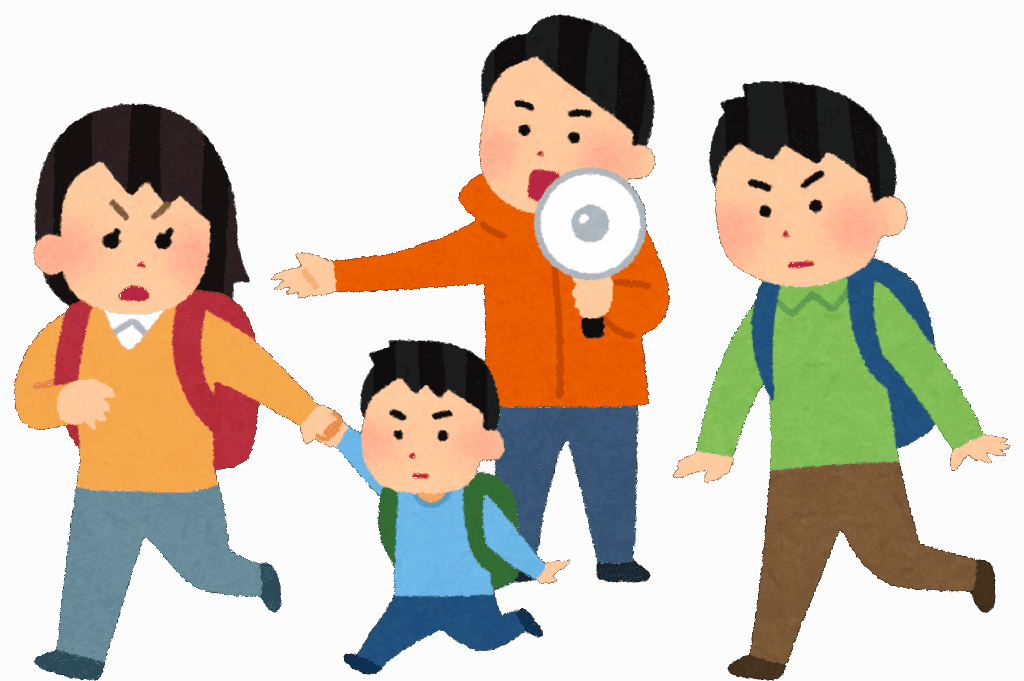
Japan is located where four tectonic plates meet, making it one of the world’s most earthquake-prone countries. Major disasters like the 1995 Kobe Earthquake and the 2011 Tōhoku Earthquake have caused tremendous damage.
Because earthquakes are a constant possibility, preparation is part of daily life in Japan.
Earthquakes come without warning
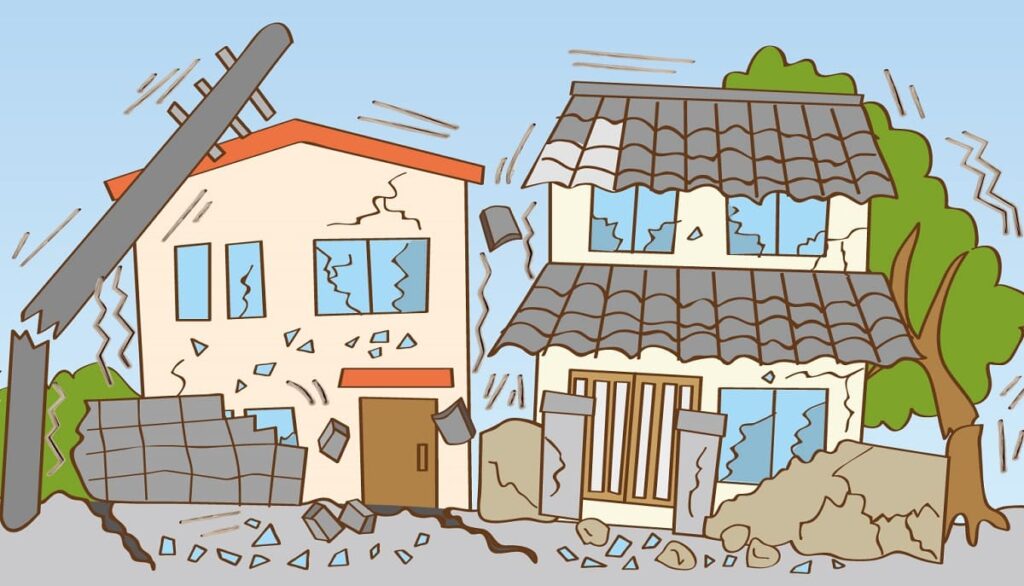
Unlike typhoons or heavy rain, earthquakes often hit without any notice. That’s why you shouldn’t delay your preparations—waiting until it’s too late could be dangerous.
Have a grab-and-go emergency bag packed and ready at all times.
Know the minimum emergency supplies
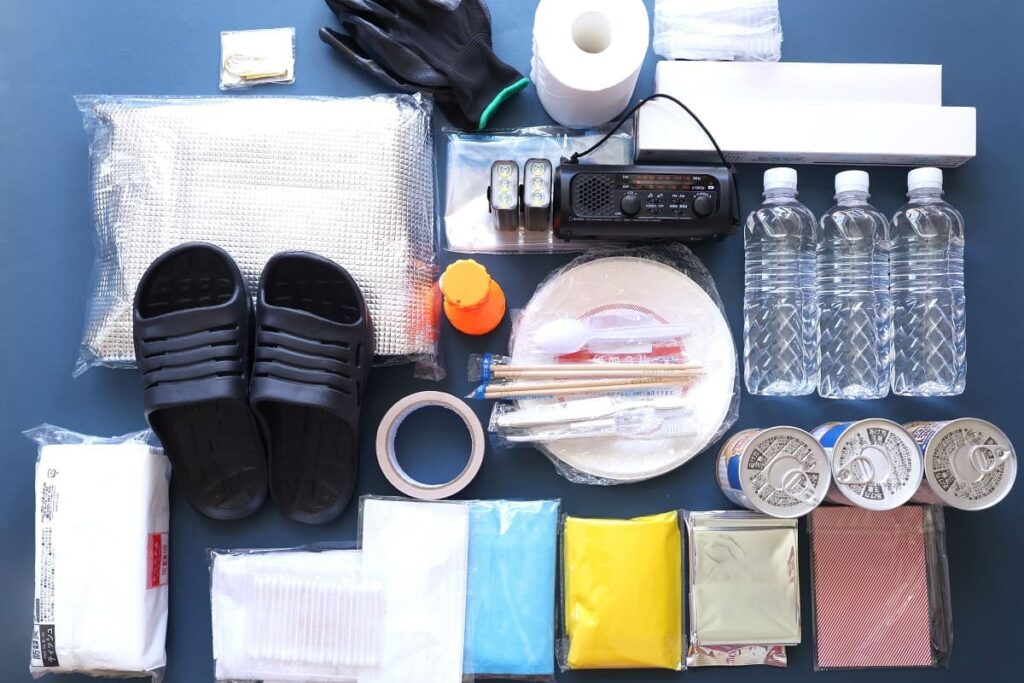
We’ll show you what to prepare—focusing on items you’ll need both during evacuation and while staying at a shelter. If you don’t want to buy everything separately, you can always opt for a pre-packed emergency backpack.
Must-Have Emergency Supplies in Japan

So let’s jump right in and take a look at the essential emergency items you’ll need during a disaster!
Essentials for survival: water & food
Drinking water
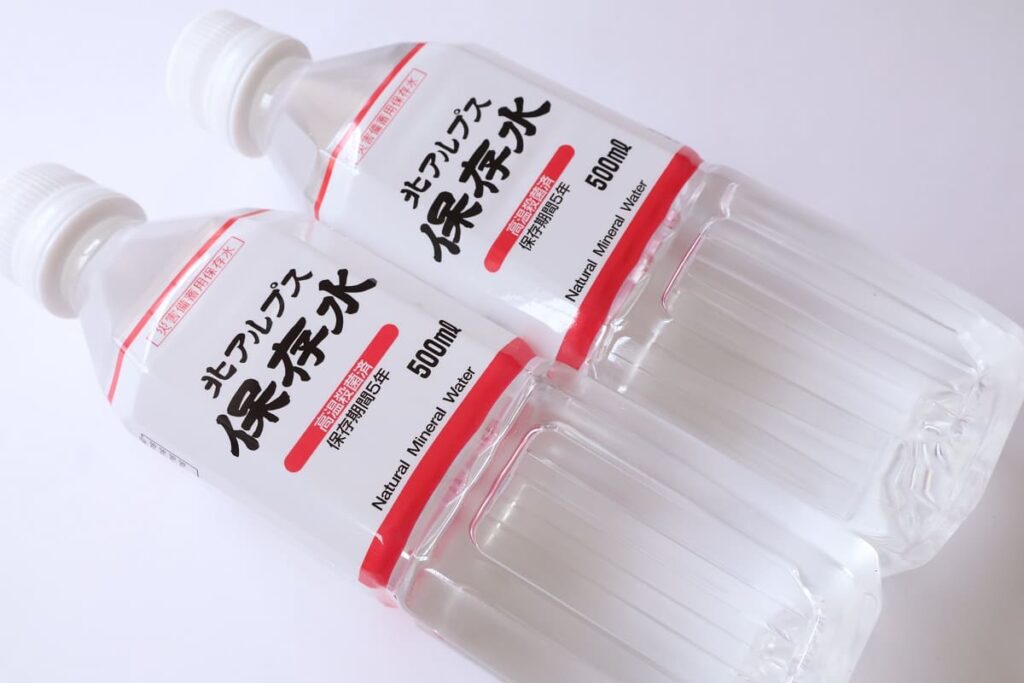
Water supply may stop during a disaster. You’ll need it for drinking, cooking, and hygiene. Prepare 3 liters per person per day, and stock at least a 3-day supply (9 liters).
Food
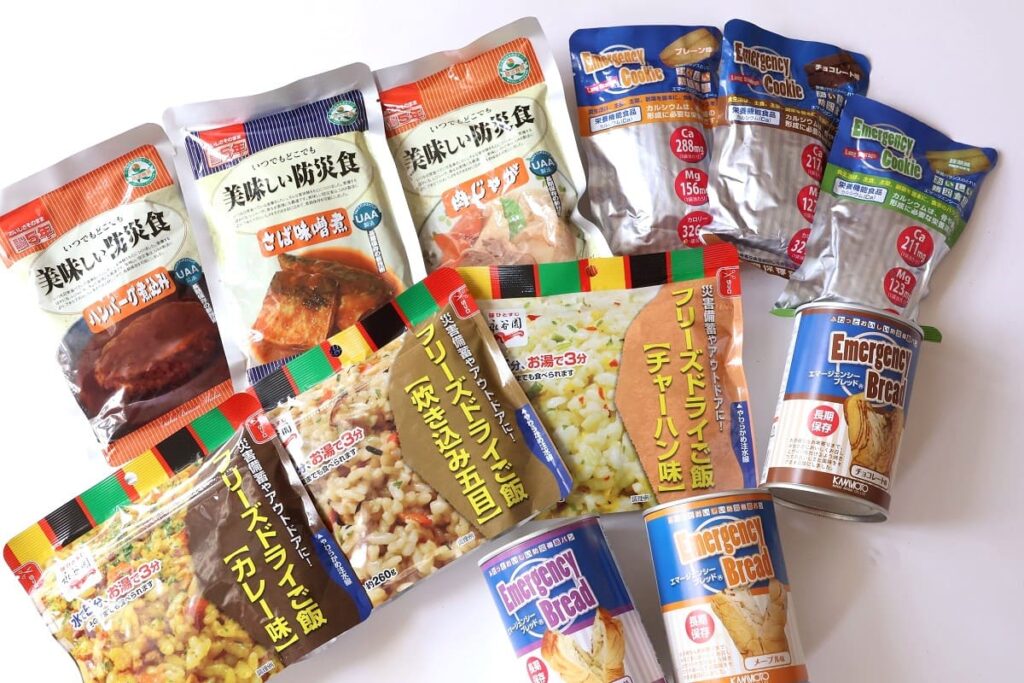
Keep ready-to-eat items like canned food, retort pouches, preserved bread, and nutrition bars. Fruit cans and powdered vegetable juice are great for preventing vitamin deficiency.

We’ve stocked up on things like alpha rice (just add water or hot water to get fluffy rice), long-life emergency meals that last for 5 years, and preserved cookies and bread that don’t need refrigeration.

In Japan, there are so many emergency foods that last a long time, so it’s a good idea to choose the ones you like and build your kit around them.
Toiletry and hygiene essentials
Portable toilets
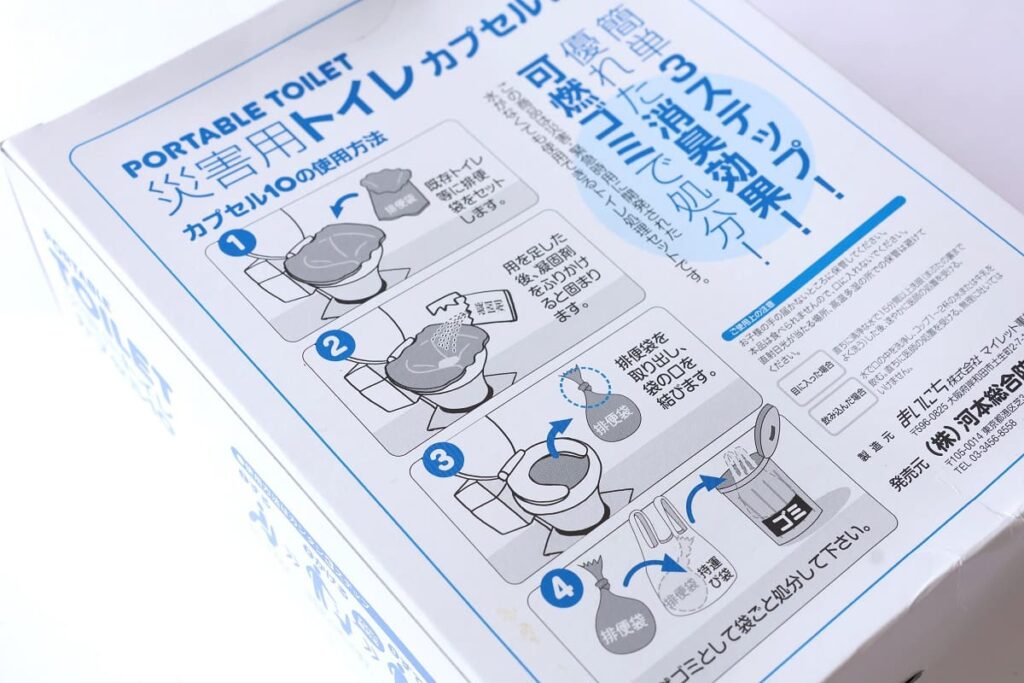

Evacuation centers might have long lines or broken plumbing. Stock at least one week’s worth of portable or emergency toilets.

During disasters, it’s said that about 70% of people need to use the restroom within six hours. But building toilets often become unusable during emergencies, so having portable toilets ready is absolutely essential! And don’t forget the toilet paper!
Masks, alcohol sanitizer, and wet wipes
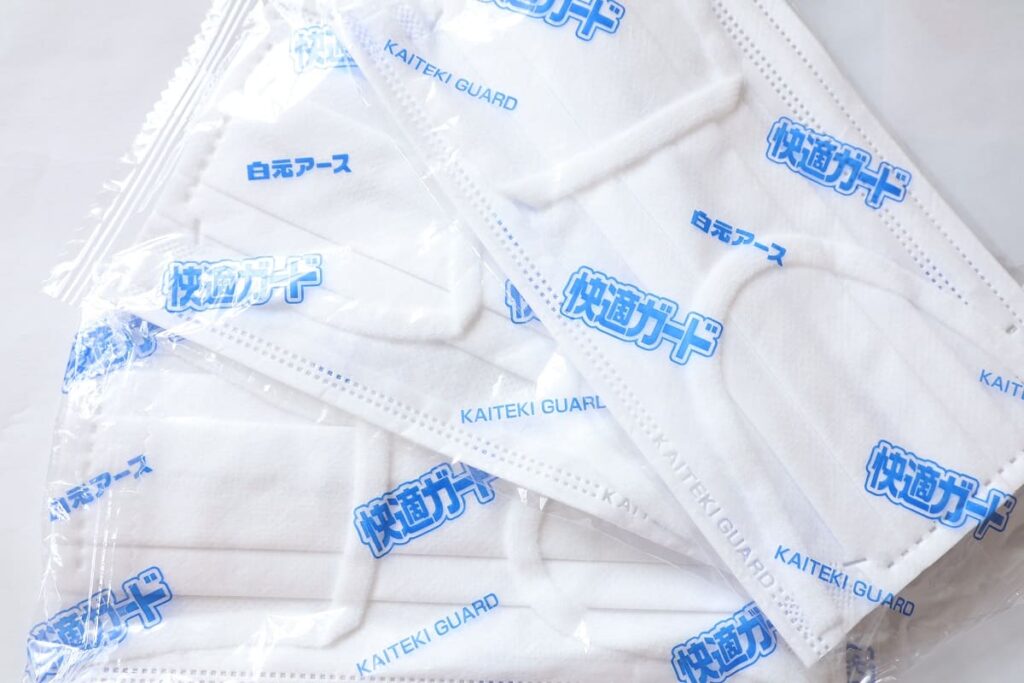
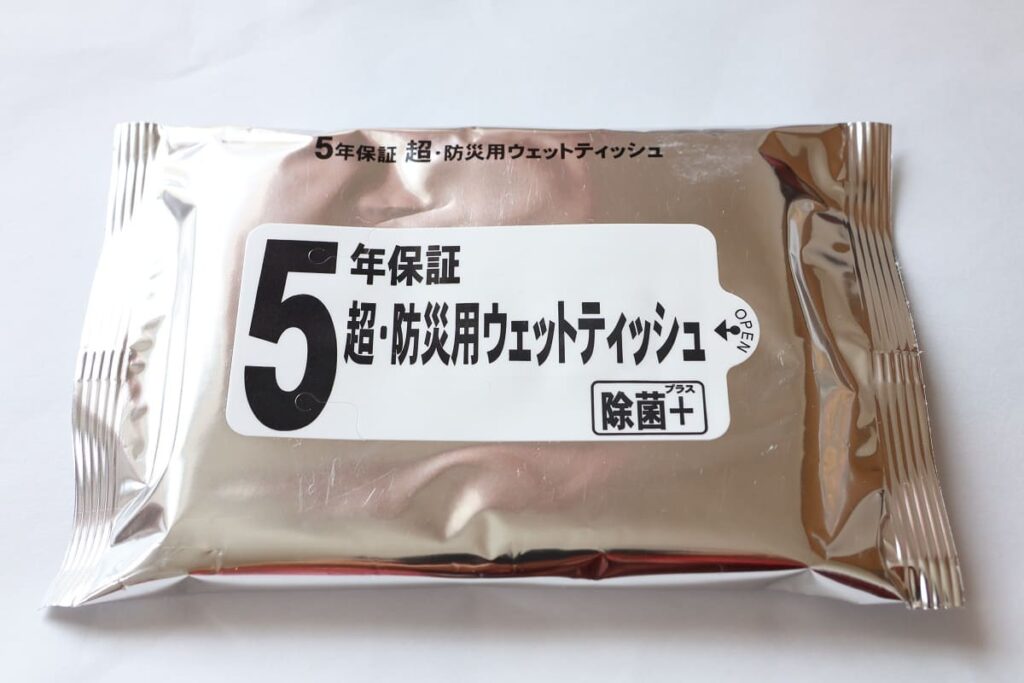
Masks are essential for infection control, and they can also help with cold weather and dry air. Alcohol and disinfecting wipes come in handy when you can’t wash your hands.

If you have the space, add baby wipes to your kit too. In evacuation situations, it’s not uncommon to go days without a bath. Baby wipes are gentle—most are alcohol-free—so they’re safe even on sensitive skin.
Toothbrush

Poor oral hygiene in shelters can lead to dental problems. Keep your toothbrush ready to maintain your health.

We’ve prepared toothbrushes that already have toothpaste on them. That way, you don’t need to carry a tube of toothpaste—super convenient!

Also, since there might be times when you can’t use water for days, having a travel-sized bottle of mouthwash can help keep your mouth clean.
Towels

Towels can serve multiple purposes: drying, wrapping injuries, or even providing warmth. Bring more than one.
First aid and health management
First aid kit
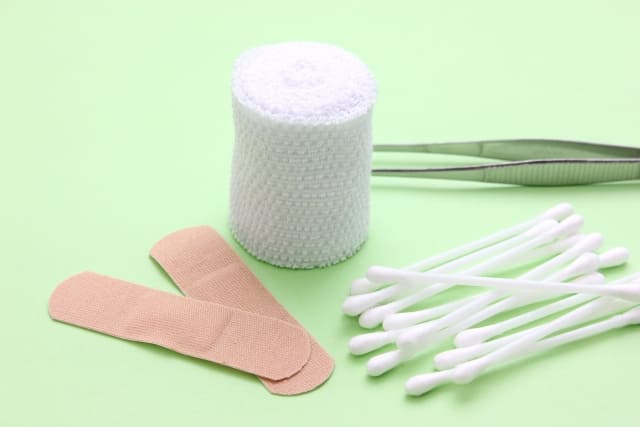
Stock band-aids, bandages, your personal medication, and basic medical supplies in a small pouch.
Sturdy slippers
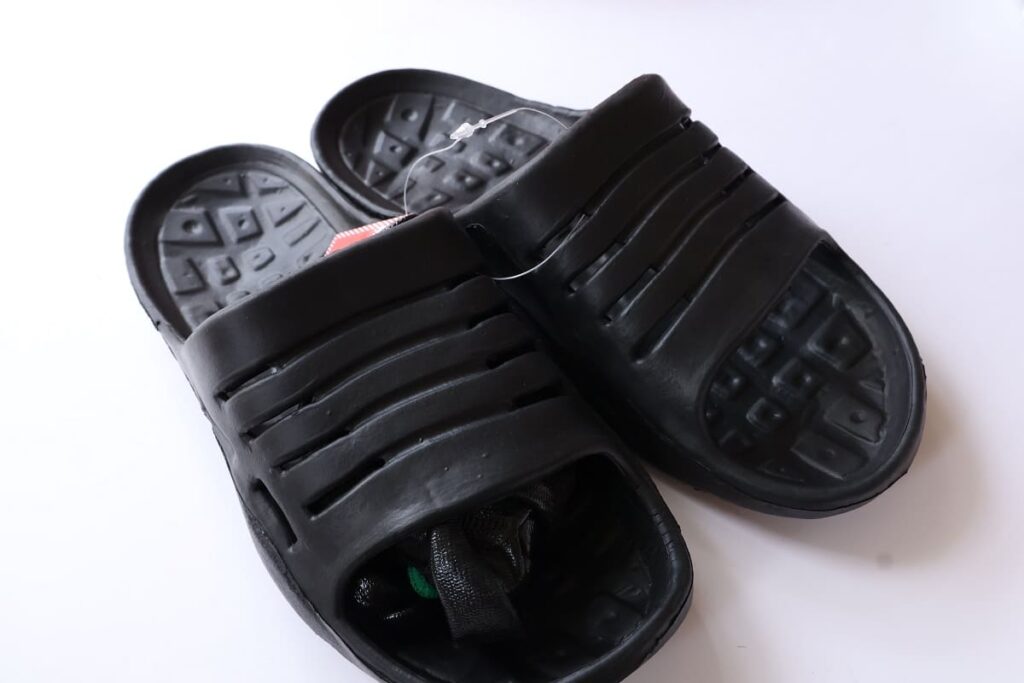
Shoes may get wet or lost during evacuation. Pack durable slippers that protect your feet from broken glass or rubble.
Rain gear, thermal blankets
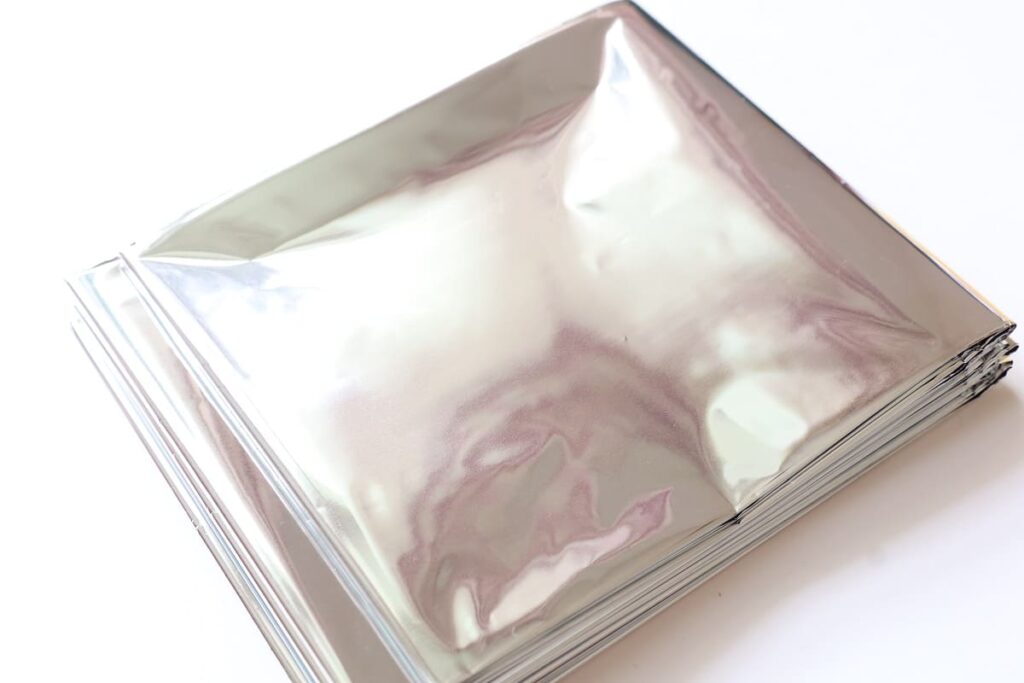
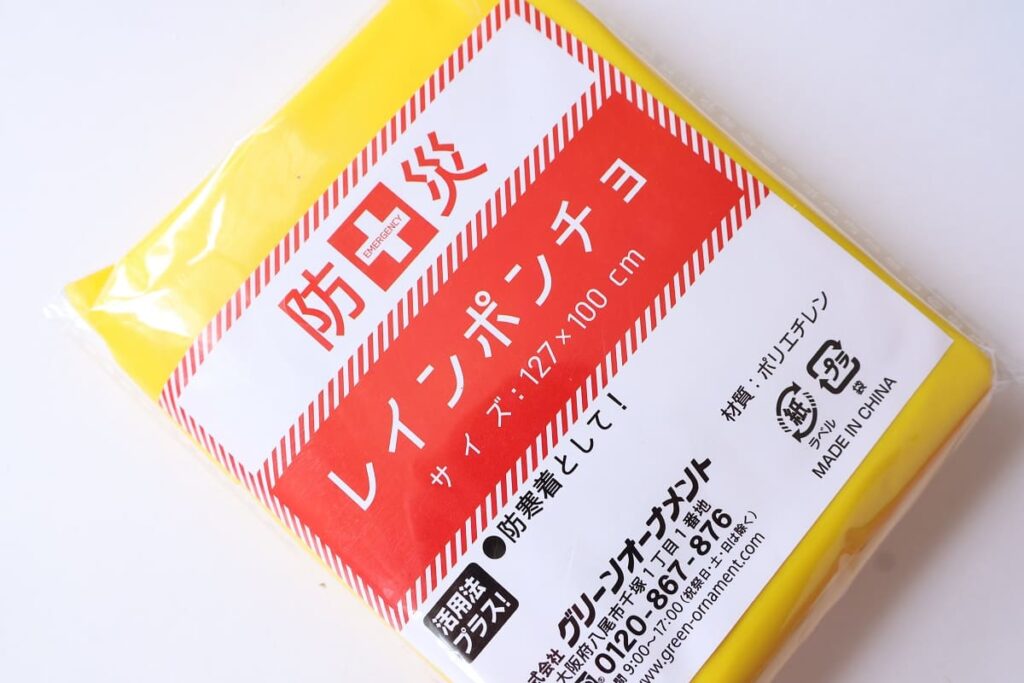
Staying warm is crucial. Pack compact rainwear and an aluminum emergency blanket to retain body heat.

Some people wonder what those emergency aluminum blankets are even for, right? But they actually have tons of uses—they insulate heat, retain warmth, block wind, and repel water. They can even be used as a privacy screen in crowded shelters.

They’re also thin, lightweight, and super compact, which makes them perfect for carrying around.
Clothing and underwear

Prepare at least 2–3 days’ worth of clean clothes and underwear.
Tools for safety and communication
Flashlight
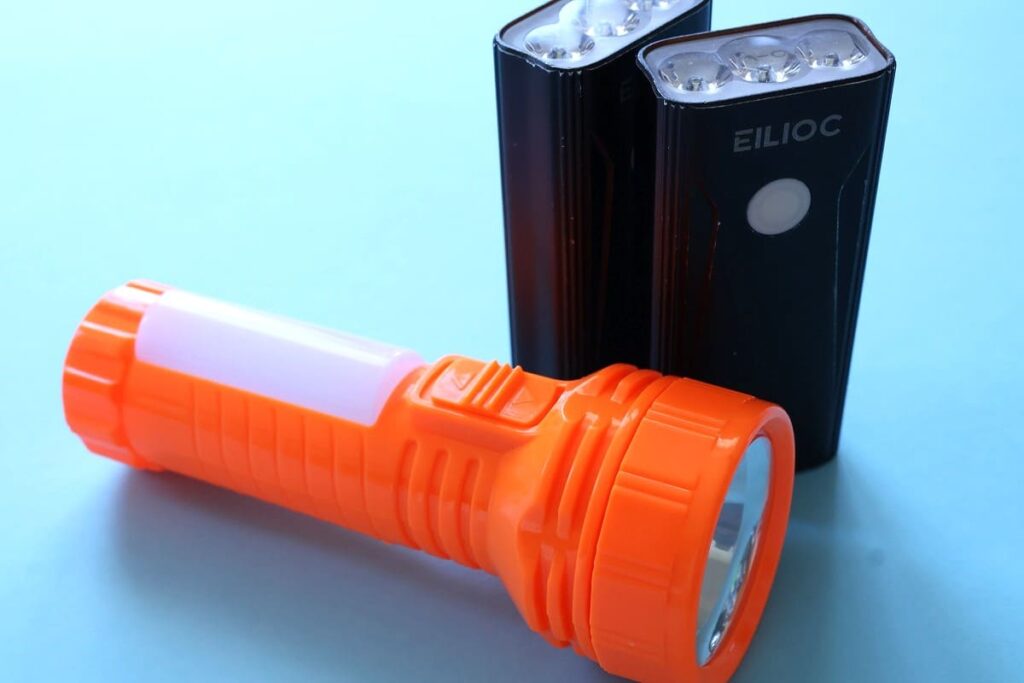
Helps you navigate in darkness or during blackouts. Consider hand-crank flashlights or those that don’t require batteries.

Disasters don’t always strike during the day. You might need to evacuate in the middle of the night, so a flashlight is a must. When your hands are full, a neck-hanging light can be really handy—having a few different types is a smart move.
Portable radio
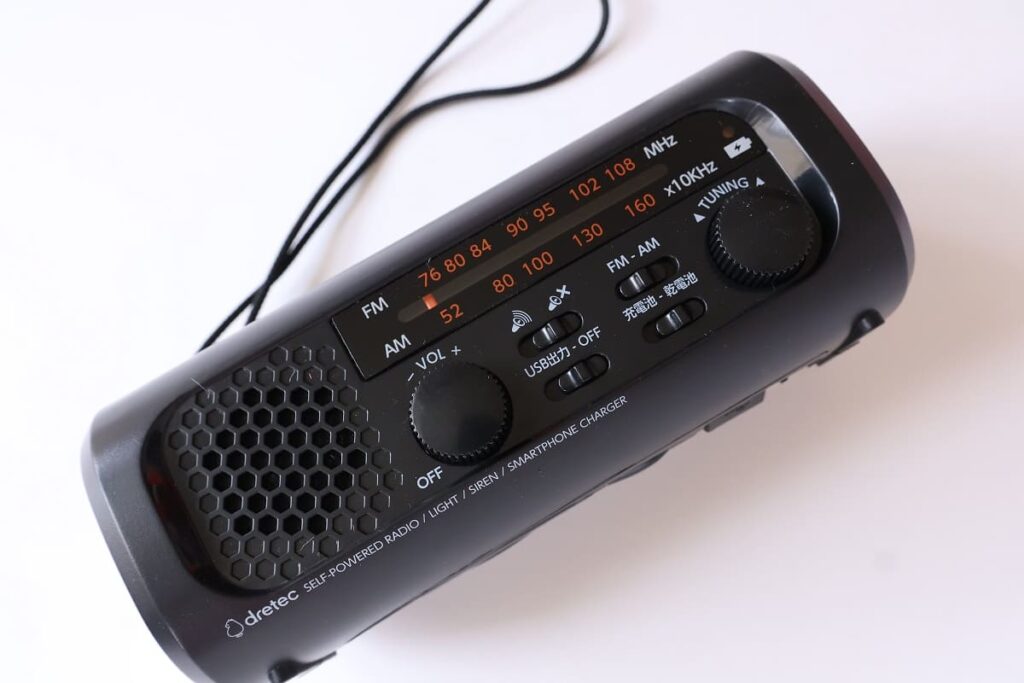
You’ll need real-time updates about the disaster. Radios are essential when internet or mobile service is down.

A portable radio is also great to have. Some people think they don’t need one if they have a smartphone, but during a disaster, your phone battery can die or the internet might be overloaded. To get accurate, up-to-date info, you should definitely have a radio ready.
Emergency whistle
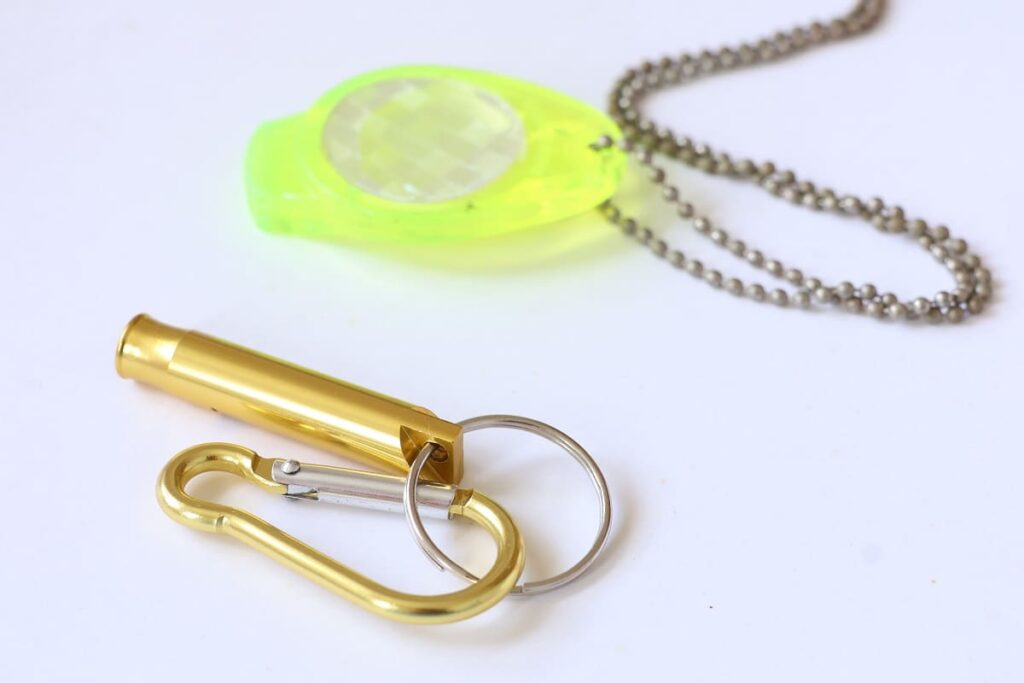
If you’re trapped or can’t speak, a whistle can signal for help. Lightweight and easy to carry.

When waiting for rescue during an emergency, you might not be in a position to shout for help. That’s why we’ve prepared two emergency whistles at home.
Water bags
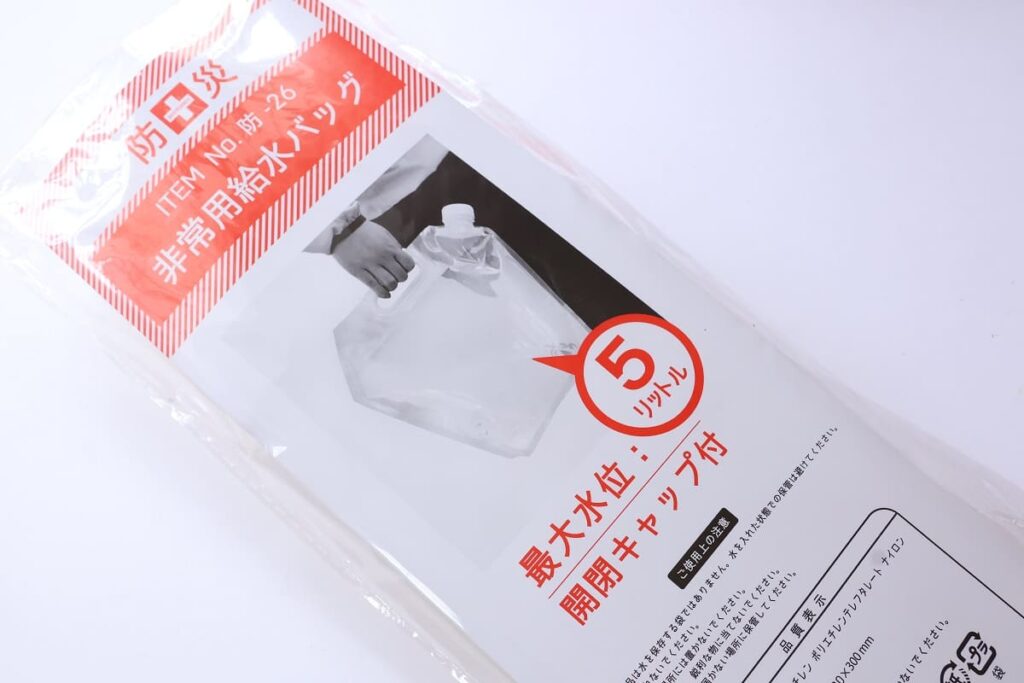
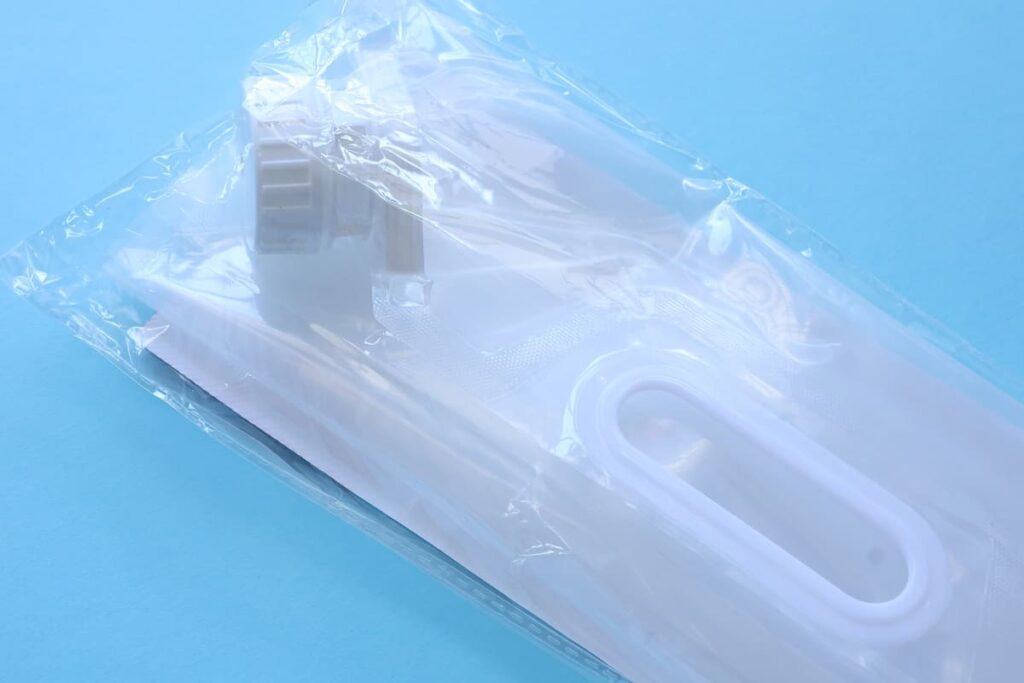
If tap water is shut off, you’ll need to collect water from supply trucks. Use a durable, large-capacity water bag.

Water bags are super important. Some people may have tanks or buckets, but those are hard to carry. Water bags are foldable and don’t take up space—and some can even be carried like a backpack. Be sure to include one!
Work gloves

Useful when clearing debris or handling glass shards. Always keep at least one sturdy pair.
Other useful items
Cash (small bills and coins)
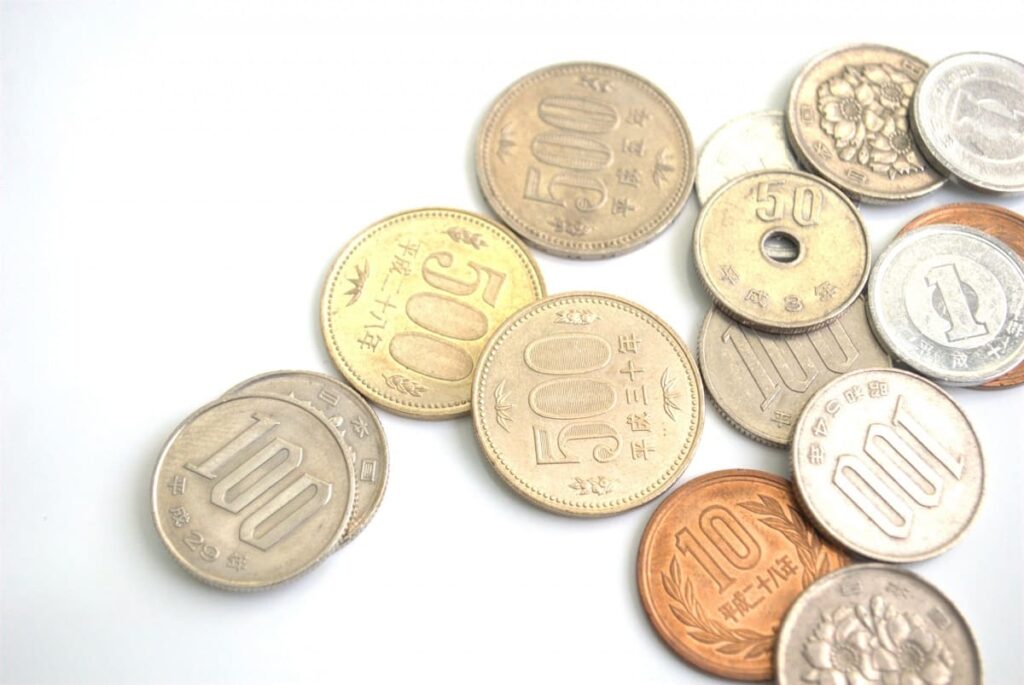
ATMs and card readers often stop working during disasters. Keep ¥10,000–¥20,000 in small denominations.
Stationery

Pens and notebooks are helpful for jotting down important info or leaving messages.
Valuables
Keep copies of important documents like bankbooks, health insurance cards, and personal ID. If possible, store the originals securely.
Consider a Pre-Packed Emergency Bag
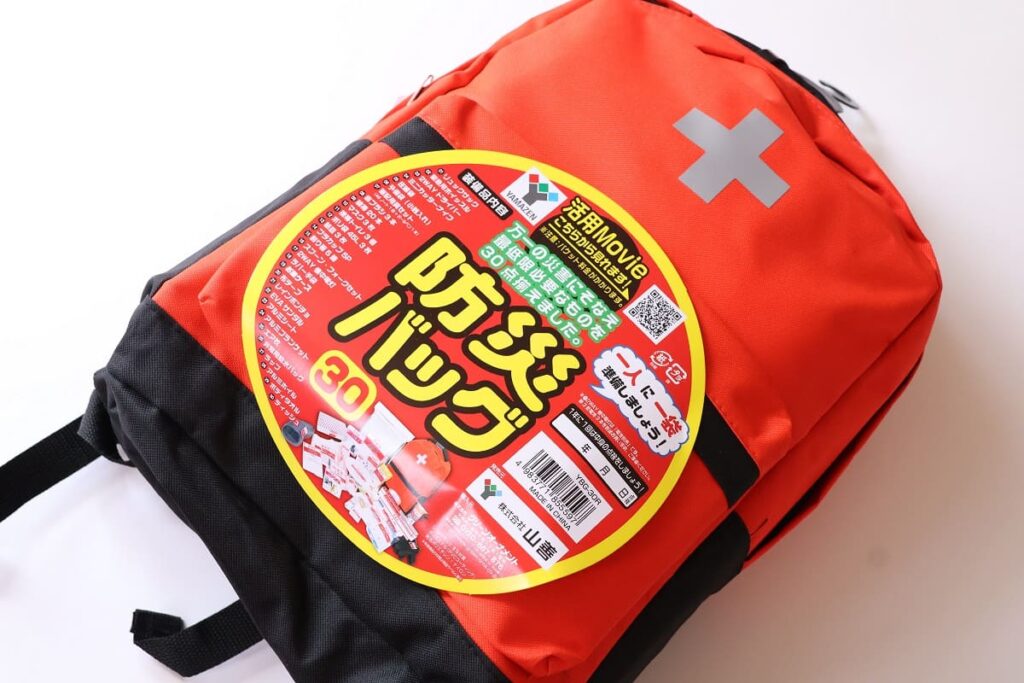
If you feel overwhelmed by the idea of buying everything separately, consider getting a ready-made emergency bag.
Why it helps
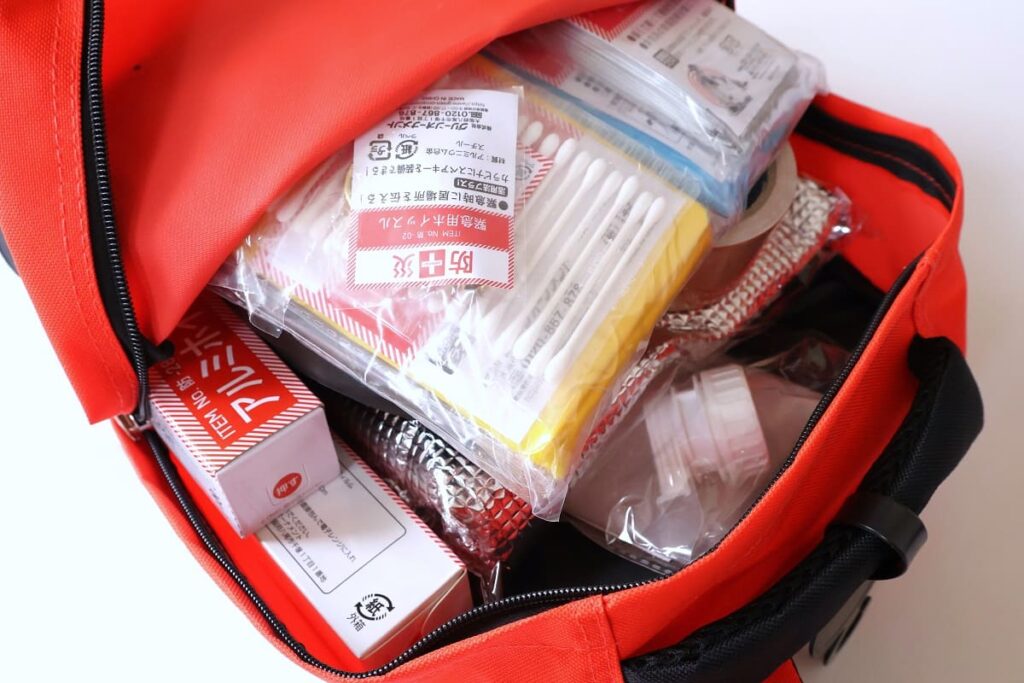
These pre-packed bags contain most of the essentials you’ll need in an emergency—water, food, sanitation items, first-aid tools, and more. It’s a hassle-free option, especially if you’re preparing for the first time.
But check the contents!
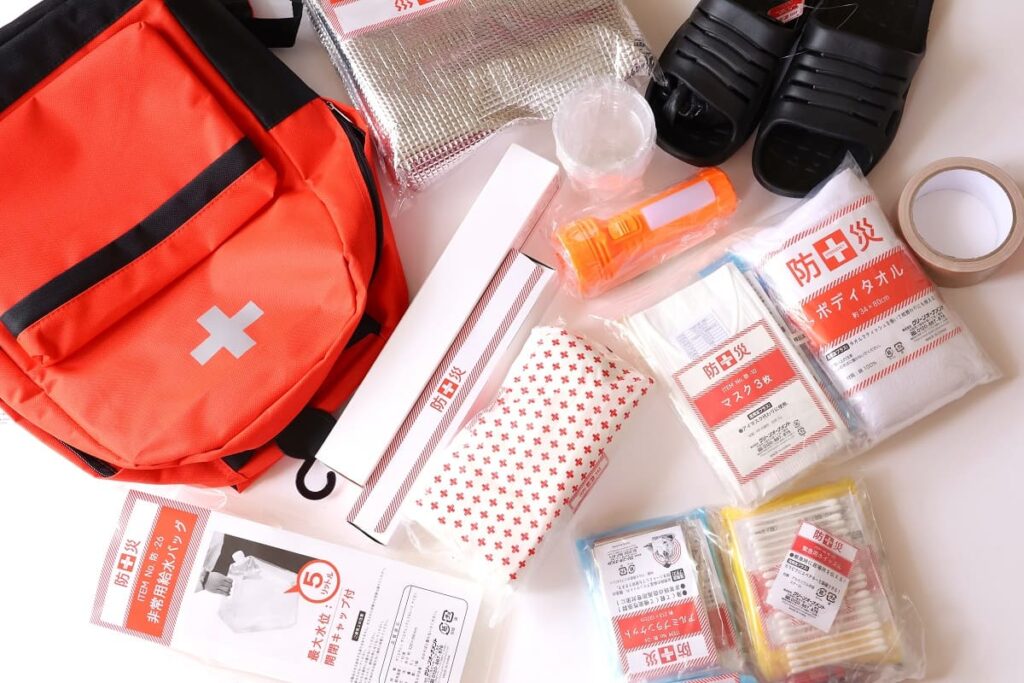
Not all emergency kits are created equal. Some may lack food or hygiene items. Always check the contents before buying, and add anything else you might need based on your personal situation—like baby supplies, pet needs, or medication.

The emergency bag I use is the Yamazen 30-piece disaster kit. It comes with paper plates, compression bags, a cutter, screwdriver, air pillow, pill case, and more—without being too heavy, which is a big plus!
Here are the 30 items included in the Yamazen emergency disaster bag:
- Backpack
- Emergency whistle
- Screwdriver
- Utility knife
- Compression bag
- Coin purse
- Notebook and ballpoint pen
- 3 toothbrushes
- 20 cotton swabs
- 3 face masks
- 3 portable toilets
- Three 45L plastic bags
- 3 paper plates
- 5 plastic cups
- 5 pairs of disposable chopsticks
- Spoon and fork
- Flashlight
- Rubber gloves
- Pill case
- Duct tape
- Rain poncho
- Sandals
- Aluminum sheet
- Emergency blanket (aluminum)
- Inflatable pillow
- Emergency water bag
- Plastic wrap
- Aluminum foil
- Body towel
- Tissues
Easy to carry
Make sure the bag is lightweight and wearable, ideally a backpack. Also, place it in a location that’s easy to grab in an emergency, like near your front door or bedside.
Q&A
- QIt’s hard to gather all the items—what should I do?
- A
Try a ready-made emergency kit. It’s a great starting point. Just make sure to customize it afterward with your personal needs.
- QWhere should I store my emergency supplies?
- A
Somewhere easy to grab—by the front door, in your bedroom, or in your car. Share the location with your family members in advance.

In major earthquakes, buildings can collapse and crush the first floor, so having supplies stored on the second floor or higher adds another layer of safety.
Final Thoughts about Earthquake Preparedness in Japan
Earthquakes in Japan can strike anytime, without warning. That’s why it’s vital to prepare now, not later.
Start with the essentials—water, food, and hygiene items—and gradually build your kit. Don’t stress about getting everything perfect right away. Just take it step by step.
And remember: being prepared brings peace of mind. With a little effort today, you’ll be much safer tomorrow.

If you are a gamer, and you are interested in Japan, you may love these games!

Yes! Let’s play!

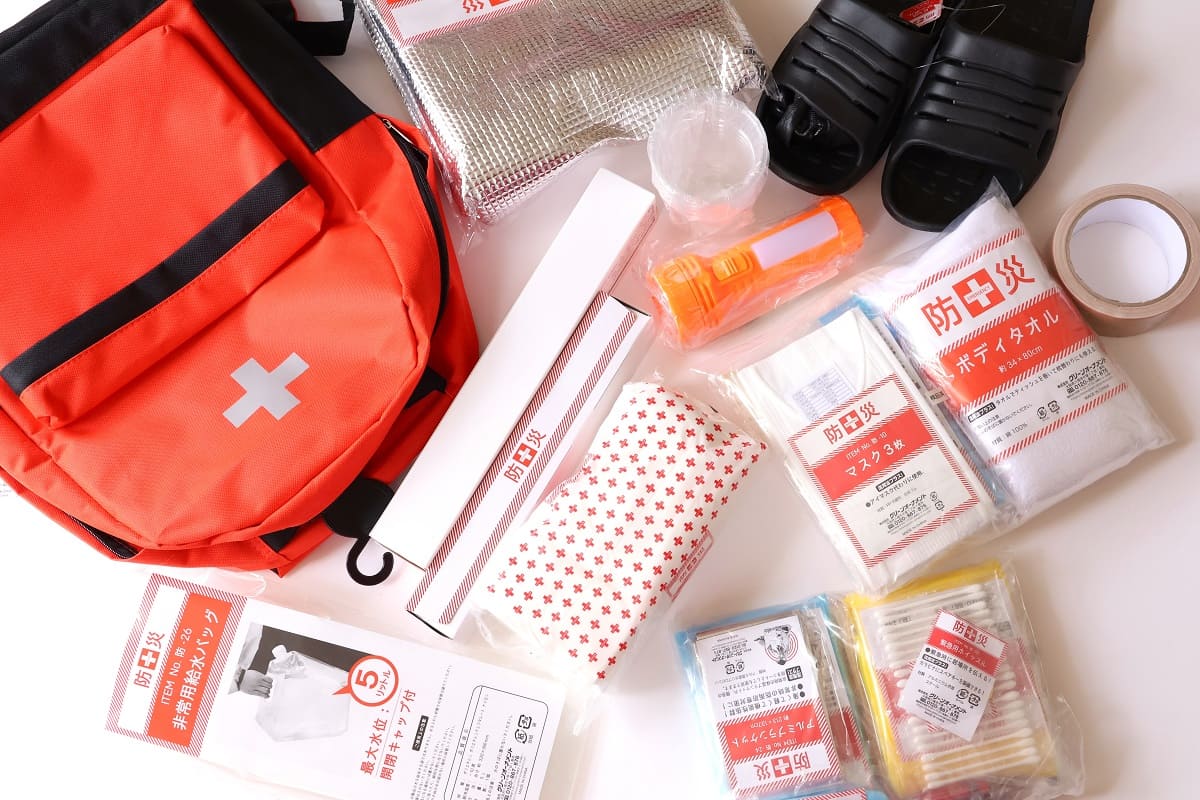


Comments